
views
Closing Doors with Handles and Knobs

Grasp the handle on the outside of the open door with your dominant hand. Your hand will be horizontal with your knuckles facing upwards. The positioning is similar to that of grabbing onto a handlebar on a bicycle. If using your dominant hand feels unnatural, switch to your non-dominant hand. If the door has a door knob installed, your hand will palm and grip around the knob as if you were holding a ball.
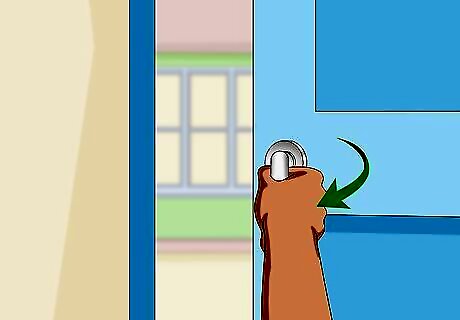
Push down on the handle or turn the knob so it rotates clockwise. The full extent of the rotation will leave the handle in a vertical position. When vertical, the latch will be completely receded into the door. Only turn door knobs as far as your wrist will allow or until the latch on the door has receded. Door handles and knobs located on the inside of the door will require a counter-clockwise motion to recede the latch. Keep this in mind for whether you are entering or exiting a room and need to quietly close the door. If this is a door to a hotel room, you need to insert the keycard into the slot before turning the handle. Once the indicator light flashes green, you will be able to rotate the handle freely and remove the keycard from the slot.

Pull the door towards you slowly to begin closing the door. Keep ample pressure on the door handle or knob so that the latch does not resurface. If you are standing close to the door frame, you may have to take 1 or 2 steps backward to prevent the door from hitting your face or body. If you are inside of the room you are closing the door to, then this will require a pushing motion instead of a pulling motion. Some doors are weighted to partially or fully close by themselves. Balance the door’s weight against your arm and maintain a slow speed to prevent it from slamming shut. Old, wooden doors that are lightweight may require you to quickly pull the door shut in one sweeping motion to keep the hinges from creaking. Just make sure to stop its motion before it comes in contact with the door frame. Traditional car doors will also require a similar pulling or pushing motion. Car doors are a bit weighted, so make sure to carefully guide the door’s momentum to prevent it from slamming shut.

Continue pulling the door until it gently rests inside of the door frame. The plate where the latch is receded should now be aligned with a similar plate attached to the door frame. Do not begin to let go of the handle until you are sure that the door is in place; otherwise, the latch missing its proper placement will make a loud noise. Apply extra pressure on the door handle or knob to yank warped doors into place. Don’t pull the door until it is touching the outside of the frame. This will minimize any noise it makes. Screen doors often have mechanisms to prevent you from pushing or pulling it easily. If this is the case, hold onto the handle of the screen door and allow it to slowly close itself. This will prevent the latch from making a noise when the screen door comes in contact with the frame.
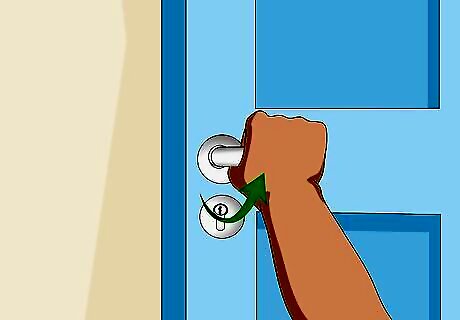
Lift the handle or rotate the knob counter-clockwise to finish closing the door. As you ease the handle or knob back into its starting position, listen for the faint click of the latch sliding into the hole of the plate on the door frame. When you hear that faint click, you can remove your grip from the handle. If you can gently push on the door and it does not move, that means you have successfully closed the door quietly. Door knobs will require you to rotate your wrist counter-clockwise rather than lift it.
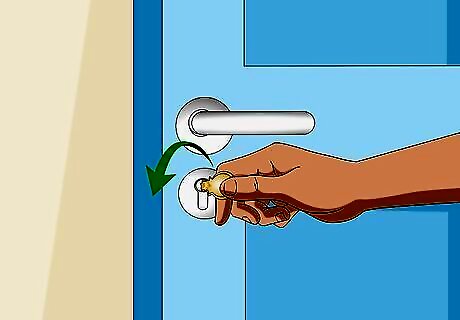
Lock the mechanism on the door with your key if needed. Part of successfully closing some doors quietly also requires you to lock them. Once you slide your key into the slot on the mechanism, rotate the key towards the door jamb until you hear the bolt slide into place, and then remove your key. This may be a clockwise or counter-clockwise rotation depending on what side of the door you are on. Avoid jostling your keys when doing this so you won’t create excess noise. If you are locking the door from inside, you will instead need to turn the locking mechanism by hand. Turn the lock slowly to avoid the bolt making a loud sound as it slides into place.

Clean and lubricate the door hinges to stop them from squeaking. Sometimes, simply wiping the hinges down with a damp cloth to remove surface grime will help reduce the noise. Follow up the cleaning by applying a lubricant like a silicone-based spray or petroleum jelly to further reduce the friction within the hinges that is causing the squeaking. The lubricant will dry out over time, and you may need to apply it again. If the door is still squeaky after lubricating the hinges, take the door off the hinges and clean the hinge pins that hold the door to the frame. These pins can easily become caked with grime that will cause the hinges to squeak. If possible, replace cheap squeaky hinges with ball bearing hinges.
Shutting Sliding or Pocket Doors
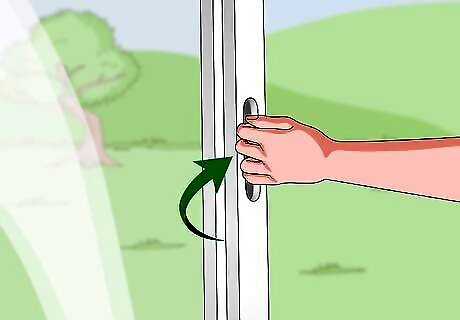
Grab the handle of the open sliding door with your dominant hand. The handle on the sliding door will most likely require you to have a vertical grip. You will be pushing the door closed later on, so if pushing with your dominant hand does not feel natural, switch to using your non-dominant hand. Sliding glass doors will typically have a handle to grab while sliding screen doors and pocket doors will have small indented areas for you to rest your fingers on. If this is the case, rest at least 3 fingers within the indented area on the sliding or pocket door.
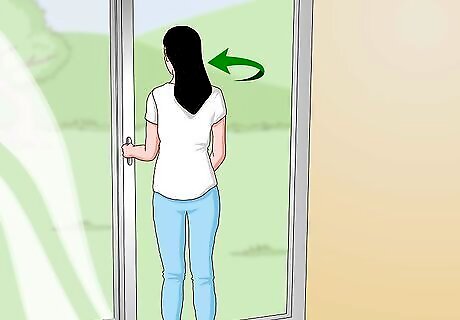
Turn to face the door frame where the locking mechanism is found. This positioning will give you more control over slowly pushing the sliding door. If you are right-handed, your arm will be angled across your body to reach the handle. If you are left-handed, your arm will be raised out in front of you at about hip or stomach level. If you are right-handed, it may feel more comfortable to stand about 1 foot (30 cm) away from the door, so your arm that is crossed over your body does not feel cramped.
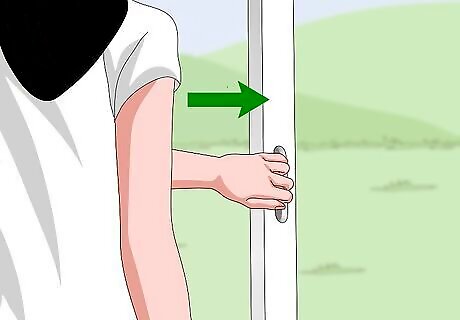
Begin sliding the door closed by slowly pushing it away from you. This will help minimize the noise output. Avoid pushing the door in a single swooping motion as the momentum will cause it to loudly grind against the tracks and slam shut. This level of patience is needed to close most doors quietly, especially sliding car doors. Pull the door closed it if feels more natural to do so. Pulling the door works best on sliding doors that aren’t weighty or have tough tracks to slide along. Vacuum or wipe out the track of the door with a wet paper towel every couple of months. This will help remove any dirt or grime that is making your door difficult to close quietly. Once clean, consider greasing the track with a silicone-based lubricant to reduce the sliding friction.

Walk along with the door as you push it fully closed. To maintain this slow push, it may help to lean your shoulder against the door or to take small steps and walk alongside it. Once you have successfully guided the door closed, give one final push against the handle to confirm that the door slid all the way into the door frame. If necessary, gently flip the locking mechanism up on the sliding door before walking away from it.


















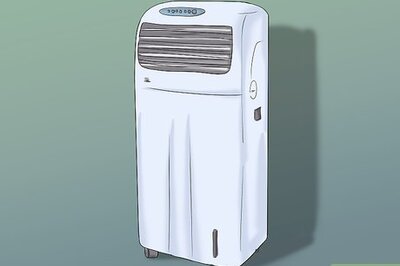
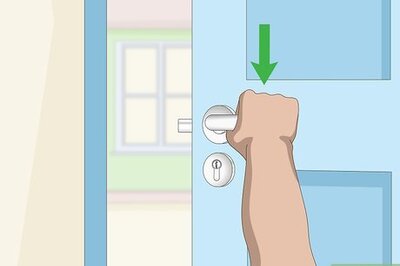
Comments
0 comment